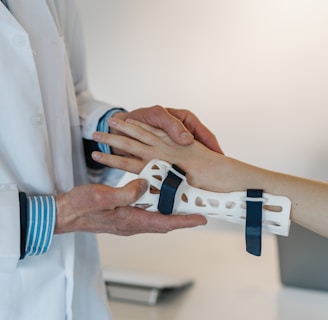PHYSICAL ACTIVITY POST-SURGERY
Benefits of physical activity during recovery.
RECOVERY
1 min read


Physical Activity Post-Surgery
The Impacts of Physical Inactivity After Surgery
Physical inactivity following surgery can significantly hinder the recovery process. Lack of movement can lead to a series of complications, including muscle atrophy, reduced joint flexibility, and increased risk of blood clots. Additionally, prolonged inactivity can contribute to the development of cardiovascular issues and negatively affect mental health, leading to feelings of depression and anxiety. Understanding these potential impacts underscores the need for incorporating physical activity into post-surgery recovery plans.
Why Physical Activity Is Crucial in the Recovery Stages
Engaging in physical activity during the recovery stages of surgery is vital for several reasons. Firstly, it promotes better blood circulation, which is essential for delivering nutrients and oxygen to healing tissues. Secondly, physical activity helps maintain muscle strength and joint flexibility, both of which are critical for regaining full mobility. Furthermore, engaging in regular movement can help alleviate pain, reduce the risk of complications such as deep vein thrombosis, and improve overall mental well-being through the release of endorphins.
Three Simple Ways to Incorporate Daily Mobility While Recovering
Recovering from surgery doesn't mean you need to engage in strenuous activities. Here are three simple ways to incorporate daily mobility:
1. Gentle Walks: Start with short, gentle walks around your home or garden. Gradually increase the duration and distance as your strength improves. Walking helps maintain cardiovascular health and prevents muscle stiffness.
2. Seated Exercises: If walking is too challenging, seated exercises can be a great alternative. Simple leg lifts, ankle circles, and arm stretches can be performed while sitting. These exercises help maintain muscle tone and joint flexibility without putting too much strain on your body.
3. Stretching Routines: Incorporate gentle stretching routines into your daily schedule. Focus on areas that may become stiff due to inactivity, such as the neck, shoulders, and legs. Stretching enhances blood flow and prevents muscle tightness.
In conclusion, incorporating physical activity into your post-surgery recovery plan is essential for a smooth and efficient healing process. By understanding the risks of physical inactivity and adopting simple yet effective mobility strategies, you can significantly enhance your overall recovery experience.
Our Services
Returning client?
Click here to login to our portal!
Direct billing available to most insurance companies!
About Us
Learn More
Rehab8 Physiotherapy. All Rights Reserved 2025
The Intersection of Healing, Movement, and Alignment.
